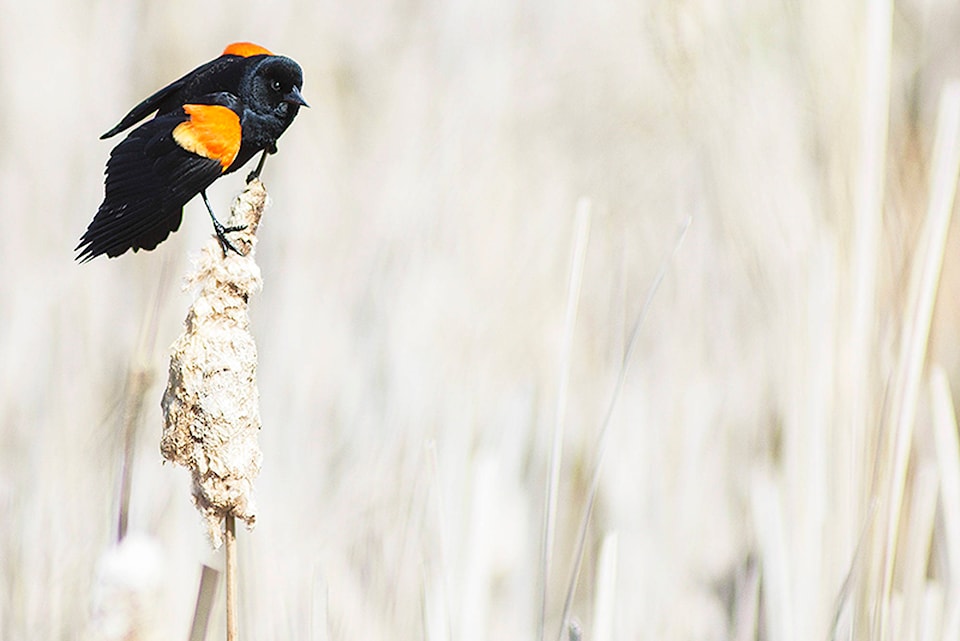Barb Brouwer
Contributor
Canaries aren’t the only birds singing of impending doom and there’s much more than a coal mine at risk.
Published in the Sept. 19 issue of the Journal of Science, the Decline of the North American Avifauna reported widespread bird population losses across much of North America over the past 48 years. However, Salmon Arm is doing its part to counter the losses.
Using data collected from many sources, the report indicated a net loss approaching 3 billion birds, or 29 per cent of 1970 abundance.
In a June 2019 report, the North American Bird Conservation Initiative Canada reported significant declines in this country, including a 40 to 60 per cent loss of shorebird, grassland bird and aerial insectivore populations.
“These groups make up 80 per cent of all bird species that were newly assessed as threatened or endangered in Canada over the last decade,” reads an NABCI Canada press release, which cites loss of important lands and waters, unsustainable agricultural practices, climate change and pollution as the most important causes of these declines. “These threats affect birds on their Canadian breeding grounds, during their migration and on their wintering grounds, highlighting the need for strong international conservation action.”
Read more: Rebounding osprey population evident in Salmon Arm
Read more: Snapshot - Western Grebe count
Ed McDonald, president of Shuswap Naturalists, says 30 per cent of the losses are primarily songbirds, something the club and SABNES (Salmon Arm Bay Nature Enhancement Society) are trying to address through the Save Shuswap Songbirds Committee.
“The songbirds have run into trouble in the last 15 years with the use of neonics,” he says of a number of poisonous chemicals used to kill the insects that many birds rely on to survive. “We’re working at trying to ban that whole thing.”
In the meantime, McDonald says nest boxes at the Salmon Arm foreshore have revealed a notable increase in swallows.
“Out of 92 boxes, 55 successfully fledged swallows, four broods of chickadees, one bluebird and one nest I’d never seen before and nobody knew what it was,” says wildlife biologist Dianne Wittner, a member of the Save Shuswap Songbirds Committee. “One of the duck boxes had five unhatched eggs, another one had a nest but nothing in it and one other duck box had a flying squirrel in it, but I am pretty sure it was temporary.”
As well as swallow and bluebird boxes, there are duck boxes, a couple of smaller boxes for chickadees and one owl box, which was occupied by wasps this year.
“What we had noticed was the first year we had nine successful swallow broods; last year we had 29 and this year 55, so we’re doubly successful,” says Wittner. “We don’t know for sure where they came from but in years past competition was fierce, which is why the number of boxes was increased.”
Read more: Handmade homes will help feathered friends on Foreshore
Read more: Snapshot - Dancing birds caught on camera
She says success should continue as long as the boxes are maintained properly. And while one owl box may be added to the collection, no more swallow boxes will be added next year in order to allow for the collection of “meaningful data.”
Wittner took over the grebe count four years ago and says the population has been stable at about 300 annually
“The good thing is we haven’t seen a decline in Salmon Arm, but we shouldn’t be complacent because they are declining elsewhere,” she says, pointing out that from 1990 to 2000, grebe nesting sites disappeared at Swan Lake, the north part of Okanagan Lake, Creston and Williams Lake. “Salmon Arm is the last western grebe stronghold so if anything happens to our grebes here they’re doomed in the province.”
On the good news front, McDonald says raptors have improved by 200 per cent and waterfowl have improved by some 70 per cent.
He says osprey were becoming extinct and the peregrine falcon was almost extinct when Rachel Carson’s 1960 book Silent Spring brought attention to the terrible effects of DDT. A total ban was in place in North America in 1970 and by 1990 osprey and eagle numbers improved greatly and have continued to improve since then, says McDonald.
@SalmonArm
marthawickett@saobserver.net
Like us on Facebook and follow us on Twitter
